MRL at Audio Mostly 2017
 The MRL will have a considerable presence at Audio Mostly 2017, the specalised conference for interaction with sound. Overall, the lab will present three research papers, two performances, one workshop, one demo, and one position paper.
The MRL will have a considerable presence at Audio Mostly 2017, the specalised conference for interaction with sound. Overall, the lab will present three research papers, two performances, one workshop, one demo, and one position paper.
Research Papers
Mapping Media and Meaning: Autoethnography as an approach to designing personal heritage soundscapes
The paper presents reflections on understanding the issues of designing of locative sonic memory-scapes. As physical space and digital media become ever more intertwined, together forming and augmenting meaning and experience, we need methods to further explore possible ways in which physical places and intangible personal content can be used to develop meaningful experiences. The paper explores the use of autoethnography as a method for soundscape design in the fields of personal heritage and locative media. Specifically, we explore possible connections between digital media, space and ‘meaning making’, suggesting how autoethnographies might help discover design opportunities for merging digital media and places. By presenting this work we hope to both create a platform through which to encourage debate and discussion, and as a basis for reference, reflection and elaboration on the methods discussed in this paper. These are methods that are more personally relevant than those typically associated with a more system-based design approaches that we often find are less sensitive to the way that emotion, relationships, memory and meaning come together. Our approach relates to the way that appreciates the potential of digital media to represent and develop sonic memory-scapes (soundscapes) in respect to our personal heritage and understanding of place. As a way to expand upon this relationship we also reflect on relations between personal and community-based responses.
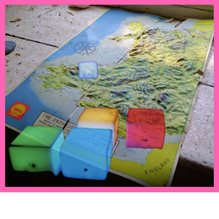
Alan Chamberlain, Mads Bødker, and Konstantinos Papangelis.
The Rough Mile: Reframing Location Through Locative Audio
We chart the design and deployment of The Rough Mile: a multi-layered audio walk that blends pre-recorded spoken word, original music, and ambient environmental sound with real-time external ambient sound by employing bone conduction headphones. The design of the walking experience – set in a city centre streets – deliberately sought to explore novel mechanisms to create thematic and functional relationships between the layers of audio and attributes of the built environment, with the intention of constructing an augmented environment where the sounds of real and fictional are blurred. Twenty-six participates completed the walk describing an absorbing and well paced experience that encouraged them to view the location with an altered perspective, one that pulled aspects of the built environment and its population into the fictional story. We distil the findings and present a set of implications for the design of such locative walking experiences.
Adrian Hazzard, Jocelyn Spence, Chris Greenhalgh, and Sean McGrath.
Creating Space for Facilitated Music Performance: Gesture Controlled Sound for Users with Complex Disabilities
Musical interactions have the potential to increase emotional well-being, self-condence and self-motivation. However,the ability to actively participate in creative activities involving music performance has so far been dicult for userswith complex disabilities.This paper discusses placing a technology probe, using gesture based musical controls, in an existing music technologyproject for users with complex disabilities (conditions which affect both cognitive and motor abilities of an individual).The focus is on understanding the needs of this user group in a participatory design approach for creative musictechnologies that allow for tailored accessibility.Outcomes from this research show that many multi-level social interactions surrounding the technology, users, audience,and any third party facilitators exist in the context of ‘facilitated performance’. Results suggest that including facilitatorsin the design of Digital Musical Instruments (DMIs) could allow for improved accessibility for users with complex disabilities.
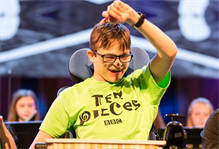
Amy Dickens, Chris Greenhalgh, and Boriana Koleva.
Position Paper
Are the Robots Coming? Designing for Autonomy & Control in Musical Creativity & Performance
This paper expands upon our previous work, and starts to unpack notions of autonomy and control in musical composition and performance-based systems. The term autonomous has become synonymous with technologies such as “autonomous vehicles” and “drones”, while notions of control have mainly been raised in respect to the “control” of industrial systems and in respect to protocols. This position piece disrupts these notions and provides a platform, introducing a more radical proposition in respect to the representation of autonomy and control of features that can be used to design systems that support musical composition and performance. This paper supports a growing interest within the Design, HCI, Audio, Machine Learning and Artificial Intelligence communities.
The musical pieces presented in this work have now form a soundtrack.
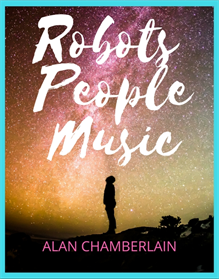
Alan Chamberlain.
Demo
A Network of Noise: Designing with a Decade of Data to Sonify JANET
The existing sonification of networks mainly focuses on security. Our novel approach is framed by the ways in which network traffic changes over the national Janet network. Using a variety of sonification techniques, we examine the user context, how this sonification leads to system design considerations, and feeds back into the user experience. Different views of the same data are presented using alternate designs, prompting a consideration of the design pattern used and how to sonify rapidly expanding data and the patterns that appear in the data. The use of context can also focus on the alternate aspects of data, allowing us to discover different relationships in the network data. We also explore repeatability issues pertaining to the system and technical choices supporting them as well as considering the network as socio-technical system.
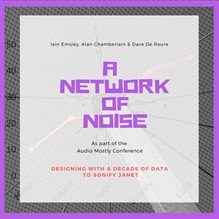
Iain Emsley, Alan Chamberlain, and David De Roure.
Performances
"The Gift of the Algorithm: Beyond Autonomy and Control” - Software developed by David De Roure
This piece brings together, participation, algorithmic composition and augmentation (as a mechanism by which people can work together to augment and support a composer’s workflow). The performance is about understanding the ways in which composition and performance can be understood, socially, aesthetically and scientifically. This performance becomes a piece of research and design in its own right, a more experimental manifestation of HCI, but it also demonstrates and disrupts conventional production and performance by making the multiple layers of practice and provenance obvious.
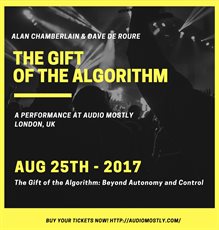
Alan Chamberlain.
“Climb!” A Virtuoso Piece and Musical Game for Disklavier
“Climb!”, a composition for Disklavier and interactive electronics, engages the pianist in a musical environment with no fixed form: the performer´s actions dictate how they progress through a branching compositional structure. Interactions are managed with Muzicodes and MELD. Muzicodes, enables the composer to identify musical motifs that function as triggers for digital interactions. MELD uses MEI encoding to display dynamic scores. Correct or incorrect performance of codes define which page of the score is displayed; control a MAX/MSP effect processing patch; start and stop the automated parts on Disklavier; and control images that help the audience understand the interactions.
Maria Kallionpää, Chris Greenhalgh, Adrian Hazzard, David Weigl, and Kevin Page
Workshop
Interaction, Instruments and Performance: HCI and the Design of Future Music Technologies
There has been little chance for researchers, performers and designers in the UK to come together in order to explore the use and design of new and evolving technologies for musical performance. This workshop examines the interplay between people, musical instruments, performance and technology. Now, more than ever technology is enabling us to augment the body, develop new ways to play and perform, and augment existing instruments that can span the physical and digital realms. By bringing together performers, artists, designers and researchers we aim to develop and new understandings how we might co-create new performance technologies.
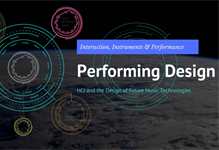
Alan Chamberlain, Xenia Pestova, Mads Bødker, Maria Kallionpää, David De Roure, and Steve Benford.
Workshop Website
References
Full Papers
Alan Chamberlain, Mads Bødker, and Konstantinos Papangelis. 2017. Mapping Media and Meaning: Autoethnography as an approach to designing personal heritage soundscapes. In Proceedings of the Audio Mostly 2017 (AM '17). ACM, New York, NY, USA. https://doi.org/10.1145/3123514.3123536
Adrian Hazzard, Jocelyn Spence, Chris Greenhalgh, and Sean McGrath. 2017. The Rough Mile: Reframing Location Through Locative Audio. In Proceedings of the Audio Mostly 2017 (AM '17). ACM, New York, NY, USA.
Amy Dickens, Chris Greenhalgh, and Boriana Koleva. 2017. Creating Space for Facilitated Music Performance: Gesture Controlled Sound for Users with Complex Disabilities. In Proceedings of the Audio Mostly 2017 (AM '17). ACM, New York, NY, USA.
Position Paper
Alan Chamberlain. 2017. Are the Robots Coming? Designing for Autonomy & Control in Musical Creativity & Performance. In Proceedings of the Audio Mostly 2017 (AM '17). ACM, New York, NY, USA. https://doi.org/10.1145/3123514.3123568
Demo
Iain Emsley, Alan Chamberlain, and David De Roure. 2017. A Network of Noise: Designing with a Decade of Data to Sonify JANET. In Proceedings of the Audio Mostly 2017 (AM '17). ACM, New York, NY, USA.
Performances
Alan Chamberlain. 2017. The Gift of the Algorithm: Beyond Autonomy and Control” Software developed by David De Roure. In Proceedings of the Audio Mostly 2017 (AM '17). ACM, New York, NY, USA.
Maria Kallionpää, Chris Greenhalgh, Adrian Hazzard, David Weigl, and Kevin Page. 2017. “Climb!” A Virtuoso Piece and Musical Game for Disklavier. In Proceedings of the Audio Mostly 2017 (AM '17). ACM, New York, NY, USA.
Workshops
Alan Chamberlain, Xenia Pestova, Mads Bødker, Maria Kallionpää, David De Roure, and Steve Benford. 2017. Interaction, Instruments and Performance: HCI and the Design of Future Music Technologies. In Proceedings of the Audio Mostly 2017 (AM '17). ACM, New York, NY, USA.
Posted on Tuesday 25th July 2017